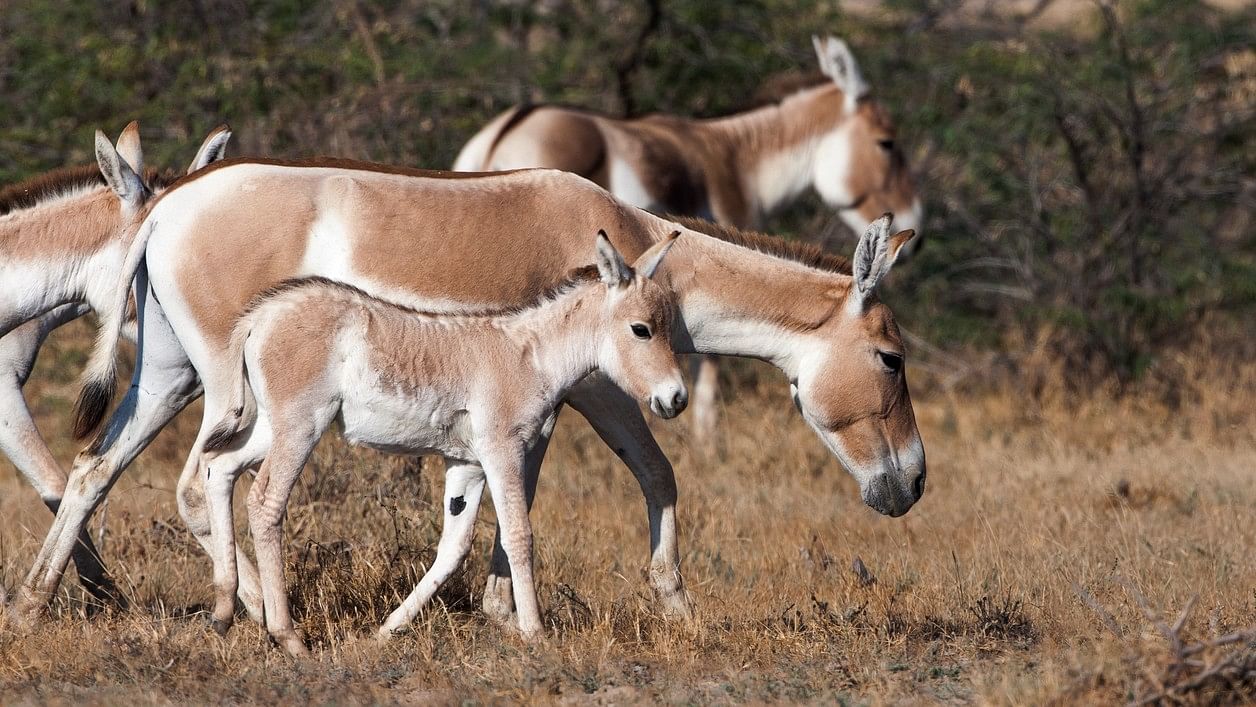
Representative image of Indian wild ass
Credit: iStock Photo
Ahmedabad: The number of Indian wild asses in Gujarat has increased over 26 per cent in the past five years, a population estimation conducted by the forest officials stated. The total population of the wild ass is estimated to be at 7,672, compared to 6,082 counted in 2020.
Once found in northwest India and Pakistan to arid regions of Central Asia, the Indian wild asses are now primarily found in the deserts of Little Rann of Kutch and Great Rann of Kutch, where its population has increased significantly over the years.
"The Gujarat government’s comprehensive efforts, combined with numerous awareness campaigns, have led to a significant rise in the wild ass population, which now stands at 7,672—an increase of approximately 26.14 per cent," the state government said in a release on Monday.
The Forest and Environment Department had conducted the 10th wild ass population survey this year. The census was conducted using traditional methods combined with modern technologies, including drone cameras, camera traps, among others.
Wild asses are primarily found in six districts of the state -- Surendranagar, Kutch, Patan, Banaskantha, Morbi and Ahmedabad. The counting found the highest number of wild asses, 2,705, in Surendranagar followed by 1,993 in Kutch district, 1,615 in Patan, 710 in Banaskantha, 642 in Morbi, and seven in Ahmedabad district.
In terms of forest regions, Dhrangadhra reported the highest population with 3,234 wild asses, followed by 2,325 in Radhanpur and 2,113 in Bhachau. In these forest and sanctuary areas, 2,569 female wild asses were counted, while 1,114 were male, 584 baby, and 2,206 remained unclassified wild asses. In the revenue areas, there are 558 female wild asses, 190 male wild asses, 168 baby wild asses, and 283 unclassified wild asses. The counting had covered an area of approximately 15,510 sq km using the direct count method.
The Indian wild ass (Equus hemionus khur) are surviving in the extreme conditions of Gujarat’s Wild Ass Sanctuary, where temperatures often soar between 45 and 50 degrees Celsius.
The primary food source for these animals is the grass that grows on the islands in the desert. They were classified as endangered animals by the International Union for Conservation of Nature (IUCN) in its 2008 report due to its limited population, and it is listed under Schedule I of the Wildlife Protection Act of 1972. Included in the IUCN’s Red List of Threatened Species, the wild ass has faced significant conservation challenges.
Government data stated that the population of wild asses is on the rise. In 1976, their number was only 720, which rose to 2,072 in 1990 and 4,451 in 2014.
Besides the wild ass, various other wildlife species were also counted, including Asian antelope, Indian gazelle, Blackbuck, Wild Boar, Indian Jackal, and Indian Desert Fox.